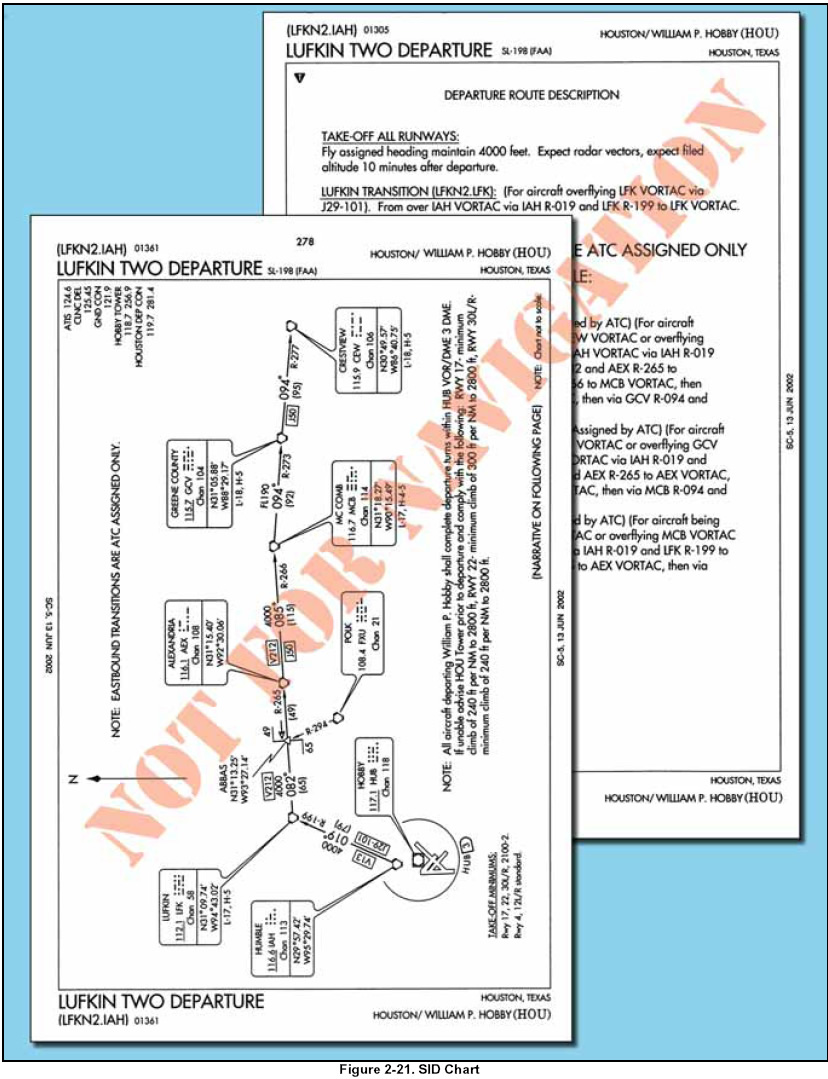 |
|
| INSTRUMENT PROCEDURES HANDBOOK |
|
STANDARD INSTRUMENT DEPARTURES A Standard Instrument Departure (SID) is an ATC requested and developed departure route, typically used in busy terminal areas. It is designed at the request of ATC in order to increase capacity of terminal airspace, effectively control the flow of traffic with minimal communication, and reduce environmental impact through noise abatement procedures. While obstacle protection is always considered in SID routing, the primary goal is to reduce ATC/pilot workload while providing seamless transitions to the en route structure. SIDs also provide additional benefits to both the airspace capacity and the airspace users by reducing radio congestion, allowing more efficient airspace use, and simplifying departure clearances. All of the benefits combine to provide effective, efficient terminal operations, thereby increasing the overall capacity of the NAS. If you cannot comply with a SID, if you do not possess SID charts or textual descriptions, or if you simply do not wish to use standard instrument departures, include the statement “NO SIDs” in the remarks section of your flight plan. Doing so notifies ATC that they cannot issue you a clearance containing a SID, but instead will clear you via your filed route to the extent possible, or via a Preferential Departure Route (PDR). It should be noted that SID usage not only decreases clearance delivery time, but also greatly simplifies your departure, easing you into the IFR structure at a desirable location and decreasing your flight management load. While you are not required to depart using a SID, it may be more difficult to receive an “as filed” clearance when departing busy airports that frequently use SID routing. SIDs are always charted graphically and are located in the TPP after the last approach chart for an airport. The SID may be one or two pages in length, depending on the size of the graphic and the amount of space required for the departure description. Each chart depicts the departure route, navigational fixes, transition routes, and required altitudes. The departure description outlines the particular procedure for each runway. [Figure 2-21 on page 2-20]
Charted transition routes allow pilots to transition from the end of the basic SID to a location in the en route structure. Typically, transition routes fan out in various directions from the end of the basic SID to allow pilots to choose the transition route that takes them in the direction of intended departure. A transition route includes a course, a minimum altitude, and distances between fixes on the route. When filing a SID for a specific transition route, include the transition in the flight plan, using the correct departure and transition code. ATC also assigns transition routes as a means of putting the flight on course to the destination. In any case, the pilot must receive an ATC clearance for the departure and the associated transition, and the clearance from ATC will include both the departure name and transition e.g., Joe Pool Nine Departure, College Station Transition. [Figure 2-22]
|

